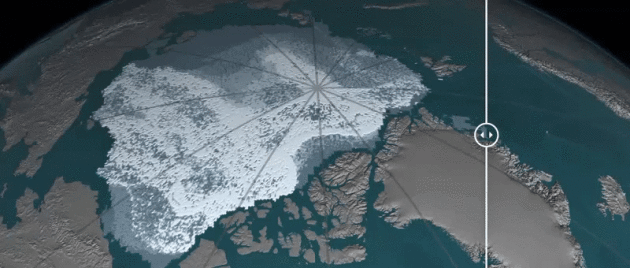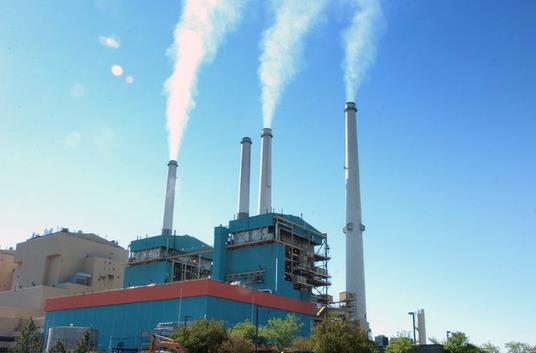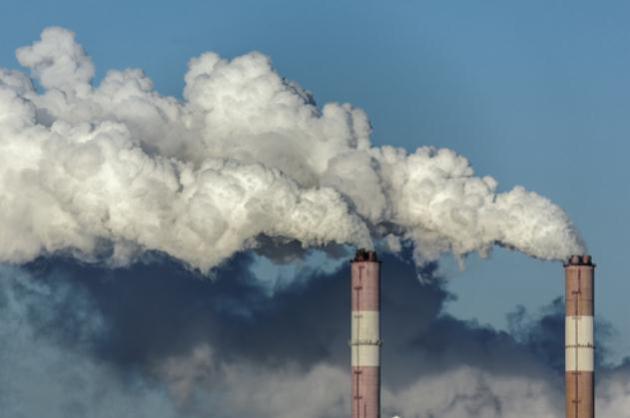30 F. maximum temperature yesterday (2:37 AM).
25 F. average high on February 1.
36 F. metro high on February 1, 2016.
February 2, 1988: The temperature bottoms out at -43 at Embarrass.
February 2, 1927: Spring-like temperatures are felt on Groundhog Day. Tracy is 57 and Fairmont reaches 56.

Chilled Groundhogs - 6 More Weeks of Winter? Yep
"It's almost as if the atmosphere has forgotten HOW to snow" a friend lamented the other day. Once again it's awfully brown out there for early February. A trend or an atmospheric fluke?
The last above average winter for snow was 70 inches in 2013-14, the year the 'polar vortex' set up shop just to our north. It was consistently cold enough for snow most of the winter. This year? Not so much.
Big snowstorms require cold air AND a fire hose of southern moisture. But this winter temperatures have been too warm aloft; big storms have dumped more rain and ice than snow. Winter temperatures have warmed over 5F at MSP since 1970 according to Climate Central, so we shouldn't be terribly surprised by the changes we're seeing.
A snowy coating is possible Saturday - models still hinting at a plowable snow next Tuesday, followed by a couple of subzero nights.
Any arctic fling will be brief. Mild, Pacific air may dominate our weather pattern much of February, adding insult to injury for snow lovers.
No matter what the groundhog sees or doesn't see - 6 more weeks of winter seems like a good bet at this latitude.

* January was mild and gray across Minnesota...
* February is a relatively dry month across Minnesota and many northern states...

Hard to Believe: Another Storm for California and West Coast. The conga-line of storms stacked up thicker than 737s over Midway continues - more heavy rain, high winds and mountain snows push into the west coast today, while lake effect snows continue downwind of the Great Lakes - a few light rain showers over the south, where a premature spring is in full swing. 84-hour NAM: NOAA and Tropicaltidbits.com.
Brief Arctic Interlude - Otherwise Flashes of March.
Check out the 15-Day outlook for MSP from the ECMWF (European) model,
showing an awful lot of 30s, even a shot at 40 F by mid-February. A few
cold days are brewing the end of next week, but any arctic fling will be
brief. Graphic: WeatherBell.
Garbage Left by Ice Fishermen Becoming Bigger Problem. Good grief. Here's an excerpt from Star Tribune: "The
biggest piece of ice fishing trash ever handled by Mille Lacs area game
warden Scott Fitzgerald was a living room couch. But every winter
there’s a new surprise and Minnesota ice anglers continue to scatter
tons of garbage on frozen lakes across the state. “It seems to be
getting worse,’’ said Lt. Col. Greg Salo, enforcement division assistant
director at the Minnesota Department of Natural Resources (DNR). Salo
said the biggest problem areas tend to be on lakes that attract large
clusters of 100 or more independently operated fish houses. It’s normal
for the occupants of those shacks or mobile wheelhouses to set refuse
outside on the ice..."
Photo credit: Renee Jones Schneider, Star Tribune. "A
DNR conservation officer picked up trash on a lake in Prior Lake in
2010. The littering problem has gotten worse statewide since then.
Overnight guests often are the worst offenders."
Pacific Domination.
No sign of any extended streaks of bitter air in the coming weeks as a
positive phase of the NAO conspires with a Pacific flow to keep
temperatures above average across much of America in 2 weeks. The only
exception may be the Great Lakes and New England.
Nothing To See Here - Please Move Along!
Hey, the arctic is running 20-50F. warmer than average and the
temperature anomaly forecast for February looks like a ketchup
commercial gone bad, but let's enjoy the warm streak! We'll see if
NOAA's CFSv2 (Climate Forecast System) outlook verifies, but the trends
are pretty glaring. Don't buck the trends - forecast warmer than average
and odds are you'll be right. Map: WeatherBell.
50 Degrees by Mid-February?
That's what Wednesday's 18z GFS forecast is hinting at by Friday,
February 17. Not sure I buy it yet but 40s within 2 weeks seems like a
pretty sure bet. Welcome to March.
Photo credit: "January storms in the Sierra Nevadas reduced California's deficit in stored snow water by about 37 percent." Credit: Flickr user Perfect Zero, CC BY 2.0.
Map credit: "These maps show how much water was stored in the Sierra snowpack on Jan. 6 (left) and Jan. 24 (center), 2017. Darker colors indicate more water. The inset bar graph in the center figure shows the annual snowpack water storage relative to the pre-drought average as well as the cumulative snow-water deficit. The map on right shows snowpack water storage on Jan. 24 as a percentage of pre-drought average snowpack water storage at its greatest. Areas in green are over 100 percent of average." Credit: CU/NASA.
In stark contrast:
Flowers Already In Bloom. Plants, flowers and trees are in bloom close to the Gulf Coast, a good 15-20 days ahead of schedule.
Photo credit: "Daniel Baggett will forever have a reminder of that incredible force in the form of a grade school drawing." (Photo source: WLOX)
You're More Likely To Catch Flu After a Cold Snap, Study Says. Because we're indoors around other (sick) people - or bitter air is a shock to our immune systems? CNN.com has the story: "Cases
of flu are on the rise, according to a recent statement from the United
States Centers for Disease Control and Prevention, and experts are
warning that this year's flu season
will be worse than last. Now, a new study published in the Journal of
Clinical Virology is shedding some light on exactly how cold weather and
the spread of viruses are linked. It turns out, seasonal flu outbreaks
first appear each year about a week after the winter's first cold spell
-- or at least that's what happened in Sweden, over the course of three
years when researchers tracked weather patterns and the prevalence of
the virus..." (Image: NOAA).

Air Pollution Increases Risk of Dementia Among Older Women, New Study Finds. Yale E360 has the story: "Older women who live in places with high air pollution levels are 92 percent more likely to develop dementia, including Alzheimer’s, according to a new study by scientists at the University of Southern California. The risk is heightened even more in women with the APOE4 gene, a genetic variation associated with an increased chance of developing Alzheimer’s. It is the latest in a growing number of studies linking air pollution with dementia..."
Photo credit: "Smog over downtown Los Angeles, which is among the top five worst U.S. cities for air pollution." Steven Buss/Flickr.
Yosemite's Tragic History of Flooding, and the Steps Its Taken to Prevent Future Disasters. Capital Weather Gang has an interesting article and video link; here's an excerpt: "Twenty
years ago, nearly two feet of warm rain fell on a deep, Sierra Nevada
snowpack, resulting in the worst flood in Yosemite National Park’s
history. The sudden inundation washed out roads, campgrounds, lodges and
utilities, and it stranded several thousand stunned visitors and
employees in the narrow Merced River valley. “Boulders the size of
houses were rolling down the swollen Merced River,” said park spokesman
Scott Gediman, who was in his first year on the job in January 1997. The
force of the raging water destroyed everything in its path. He recalled
how odd it was to see picnic tables, bear boxes and even fax machines
floating through the park. The river burst its banks on New Year’s Day.
The water level in the valley peaked at 16 feet over flood stage,
inundating park infrastructure..."
Image credit: "During
floods in May 1996 and January 1997, the roar of thundering Yosemite
Falls rattled windows at the park offices a half mile away." (U.S. National Park Service).
The Deep History of California's Catastrophic Flooding. NexusMedia has the context and perspective: "...As
the climate warms, I’m definitely concerned about what might come next.
California has been growing in places, like the Central Valley and the
Delta. Parts of the Delta are below sea level because it has been
sinking. The Central Valley has also been sinking because of groundwater
pumping, and some parts are 30 feet deeper than in 1861. It’s so much
worse now — there are more than 6 million people living in the Central
Valley alone. In 2011 the USGS presented the ARkStorm
[Atmospheric River 1,000 Storm] scenario to model the impacts of an
1861-type storm, at the time thought to be a 1,000-year event. They
modeled the storm with today’s geography and where people are living.
The bottom line is damage totaled more than $700 billion..."
Photo credit: "The 1986 flooding of the Russian River in Sonoma County, California." Source: U.S. Army Corps of Engineers.
How To Stop The U.S. Flood Insurance Program From Drowning in Debt. Expect this problem to worsen over time, as the frequency and magnitude of flooding events continues to increase. Here's an excerpt of an Op-Ed at TheHill: "This month, the Federal Emergency Management Agency (FEMA) announced that its National Flood Insurance Program (NFIP) had to borrow another $1.6 billion from the Treasury to break even on its 2016 losses. Add that to the existing debt, largely due to hurricanes Katrina and Rita and Superstorm Sandy, and the NFIP currently is almost $25 billion in debt. The NFIP is up for reauthorization later this year, and Rep. Jeb Hensarling (R-Texas), who chairs the House Financial Services Committee, has already said that reforming the program will be a “major focus” for his committee this year..."
File photo credit: U.S. Coast Guard Aircrews.
A Look at the Northwest Earthquake That Shook the World. The Pacific Northwest is just as vulnerable to earthquakes as California. Here's an excerpt from Seattlepi.com: "...An
earthquake that shocked the whole coastline would’ve been massive,
somewhere around 9.2 magnitude, and would’ve had to rupture the entire
length of the 600 mile-long fault on the Cascadia subduction zone. But
for years, scientists couldn’t narrow down exactly when it happened. By
comparing historical records in Japan, oral histories of Native
Americans and a complex computer simulation, researchers confidently
pinpointed the earthquake to around 9 p.m. on Jan. 26, 1700. A quake of
this magnitude could have gone on for five minutes or longer and
would’ve generated a wave that would have resulted in a tsunami reaching
Japan in about nine hours..." (Image credit above: EARTH Magazine).
Photo credit: " REUTERS/National Park Service. "A
general view of the Yosemite Falls flowing in Yosemite National Park in
this December 3, 2014 picture provided by the National Park Service."
Energy is the New Internet. I happen to agree with Brian LaKamp at totempower.net: "...At
heart, the Enernet is the foundation for smart-city tech, including the
“Internet of Things,” distributed systems, interconnected backbones and
networking technologies, EV-charging services and autonomous vehicles,
to name a few. These technologies will drive dramatic change and force
us to rethink our cities, municipal services and sectors like
transportation, insurance, real estate and financial services. From the
Enernet evolution will come smart cities that are an order-of-magnitude
smarter, healthier and safer. The new network will also present quantum
leaps in energy security and emergency resilience that can stand in the
face of superstorms or cyberattacks. Hold on to your seats. We’re at the
early stages of something immense..."
Texas Was the Nation's Top Electricity User in 2015. Fuel Fix has the story: "Texas
used the most electricity of any state in 2015, according to new data
released by the U.S. Department of Energy on Friday. The state used
nearly 400 million kilowatt hours of electricity that year, and led the
nation for most electricity use in homes, commercial buildings and
industrial properties. California and Florida came in second and third
in terms of electricity use, but each use more than 100 million kilowatt
less than Texas..."
Photo credit: saveonenergy.com.
Driven by Tesla, Battery Prices Cut in Half Since 2014. ThinkProgress has an update: "...Battery prices have continued their stunning decline,
with game-changing implications for electric vehicles (EVs), the
electric grid, and the cage fight between renewables and natural gas.
Bloomberg New Energy Finance (BNEF) reports that lithium-ion battery
prices have fallen “by almost half just since 2014” and “electric cars
are largely responsible.” Last year, BNEF called this “the miracle of
Musk,” referring to Elon Musk, the CEO of Tesla, which jump-started the
stagnant EV business and whose gigafactory will keep putting downward
pressure on battery costs..." (File image: electriccarsreport.com).
- Housing — rental prices for a one-bedroom apartment, rounded to nearest dollar.
- Percentage of retirees — in the local population as of April 1, 2010.
- Walkability — scores ranging from 25 for Montgomery, Ala., to 65 for Allentown, Pa.
- Safety factors — scores ranging from 6 for Rochester, N.Y., and Louisville, Ky., to 30 for Boise, Idaho.
The Mystery and Occasional Poetry of...Um..."Filled Pauses". Here's the intro to an illuminating explainer at Atlas Obscura: "Nearly
every language and every culture has what are called “filled pauses,” a
notoriously difficult-to-define concept that generally refers to sounds
or words that a speaker uses when, well, not exactly speaking. In
American English, the most common are “uh” and “um.” Until about 20
years ago, few linguists paid filled pauses much attention. They were
seen as not very interesting, a mere expulsion of sound to take up space
while the speaker figures out what to say next. (In Russian, filled
pauses are called “parasite sounds,” which is kind of rude.) But since
then, interest in filled pauses has exploded. There are conferences
about them. Researchers around the globe, in dozens of different
languages, dedicate themselves to studying them. And yet they still
remain poorly understood, especially as new forms of discourse begin
popping up..."
Photo credit: "Tokyo at night." Zengame/CC BY 2.0

TODAY: Partly sunny and brisk. Wind chill near 0. Winds: W 10-15. High: 18
THURSDAY NIGHT: Clear and chilly. Low: 6
FRIDAY: Plenty of sun, still nippy. Winds: W 8-13. High: 24
SATURDAY: Coating of light snow. Slick spots? Winds: S 10-20. Wake-up: 15. High: near 30
SUNDAY: Mostly cloudy, cooler breeze. Winds: NW 10-15. Wake-up: 20. High: 27
MONDAY: Overcast, good travel weather. Winds: SE 10-15. Wake-up: 17. High: 32
TUESDAY: Chance of a plowable snowfall. Winds: NE 10-15. Wake-up: 26. High: 29
WEDNESDAY: Flurries taper, gusty winds - turning colder. Winds: NW 10-20. Wake-up: 13. high: 18
Climate Stories...
Global Warming Threatens Winter Sports. Climate Central reports: "...The number of days below 32°F in the U.S. has been declining. This trend is projected to continue, threatening many of the winter activities that rely on cold conditions, including skiing, snowmobiling, ice fishing, and outdoor ice hockey. These winter recreational activities are an integral part of the economy in many states. Data from 2009-10 show that the ski, snowboard, and snowmobiling industries were directly and indirectly responsible for employing 211,900 people and adding an estimated $12.2 billion in economic value to the U.S. economy. As winter loses its chill, these winter tourism activities will be impacted and with them, people’s livelihoods..."
Photo credit: "People hold signs as they listen to a group of scientists speak during a rally in conjunction with the American Geophysical Union’s fall meeting Tuesday, Dec. 13, 2016, in San Francisco. The rally was to call attention to what scientist believe is unwarranted attacks by the incoming Trump administration against scientists advocating for the issue of climate change and its impact." (AP Photo/Marcio Jose Sanchez).
"Beyond the Extreme": Scientists Marvel at 'Increasingly Non-Natural' Arctic Warmth. Are we close to a tipping point - or has the arctic already tipped over into a new state? Here's an excerpt from Jason Samenow at Capital Weather Gang: "...2016 was the warmest year on record in the Arctic, and 2017 has picked up right where it left off. “Arctic extreme (relative) warmth continues,” Ryan Maue, a meteorologist with WeatherBell Analytics, tweeted on Wednesday, referring to January’s temperatures. Veteran Arctic climate scientists are stunned. “[A]fter studying the Arctic and its climate for three and a half decades, I have concluded that what has happened over the last year goes beyond even the extreme,” wrote Mark Serreze, director of the National Snow and Ice Data Center in Boulder, Colo., in an essay for Earth magazine. At the North Pole, the mercury has rocketed to near the melting point twice since November, and another huge flux of warmth is projected by models next week. Their simulations predict some places in the high Arctic will rise over 50 degrees above normal..."

Images of Change. NASA has an interactive web site
that shows the dramatic decrease in ice coverage from September 1984 to
September 2016. It turns out it's not only aerial coverage of ice, but
ice thickness as well. In the 1950s submarines in the U.S. Navy reported
ice 6-10 feet thick; now it's only a couple feet thick in many
locations.
Photo credit: "Navigation channel amongst eroding wetlands in Coastal Louisiana southeast of Houma." IAN Image and Video Library.

File photo: Matt Brown, AP.

U.S. Will Change Course on Climate Policy, Says Former EPA Transition Head. Here's an excerpt from Reuters and Yahoo News: "The
United States will switch course on climate change and pull out of a
global pact to cut emissions, said Myron Ebell, who headed U.S.
President Donald Trump's Environmental Protection Agency (EPA)
transition team until his inauguration. Ebell is the director of global
warming and international environmental policy at the Competitive
Enterprise Institute, a U.S. conservative think tank, and helped to
guide the EPA's transition after Trump was elected in November until he
was sworn in on Jan. 20. Trump, a climate skeptic, campaigned on a
pledge to boost the U.S. oil and gas drilling and coal mining industries
by reducing regulation. He alarmed nations that backed the 2015 Paris
agreement to cut greenhouse gases by pledging to pull the United States
out of the global deal agreed by nearly 200 countries. However, Trump
told the New York Times in November that he had an "open mind" on the
agreement..."

No comments:
Post a Comment